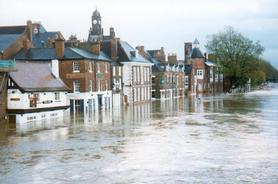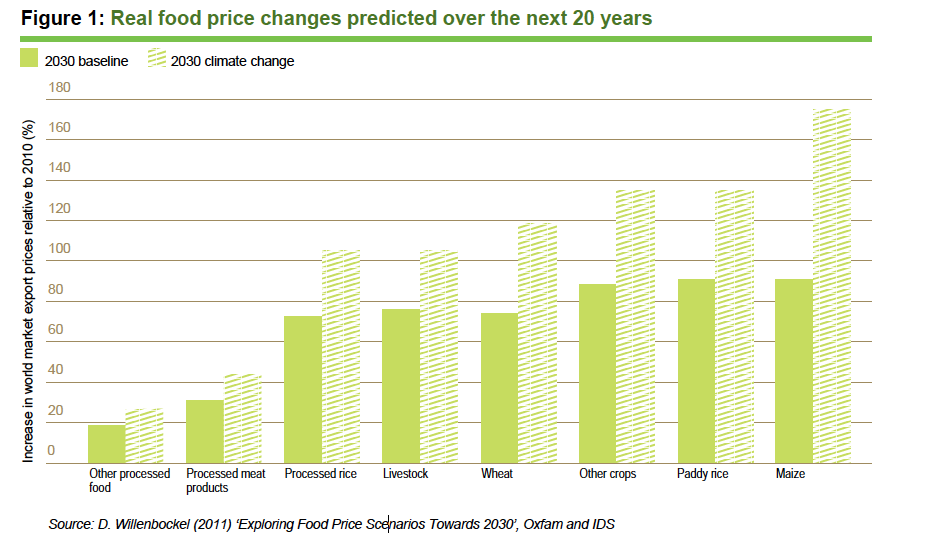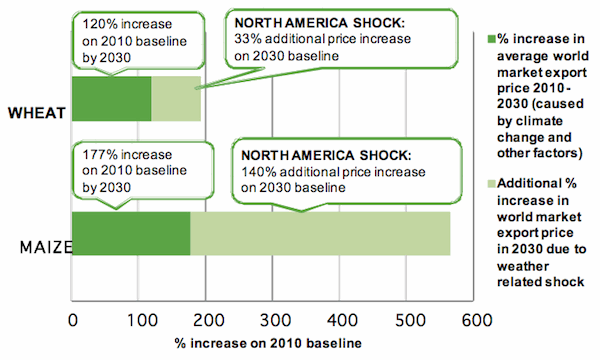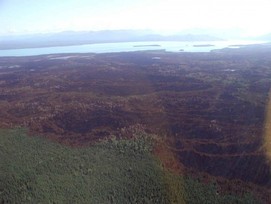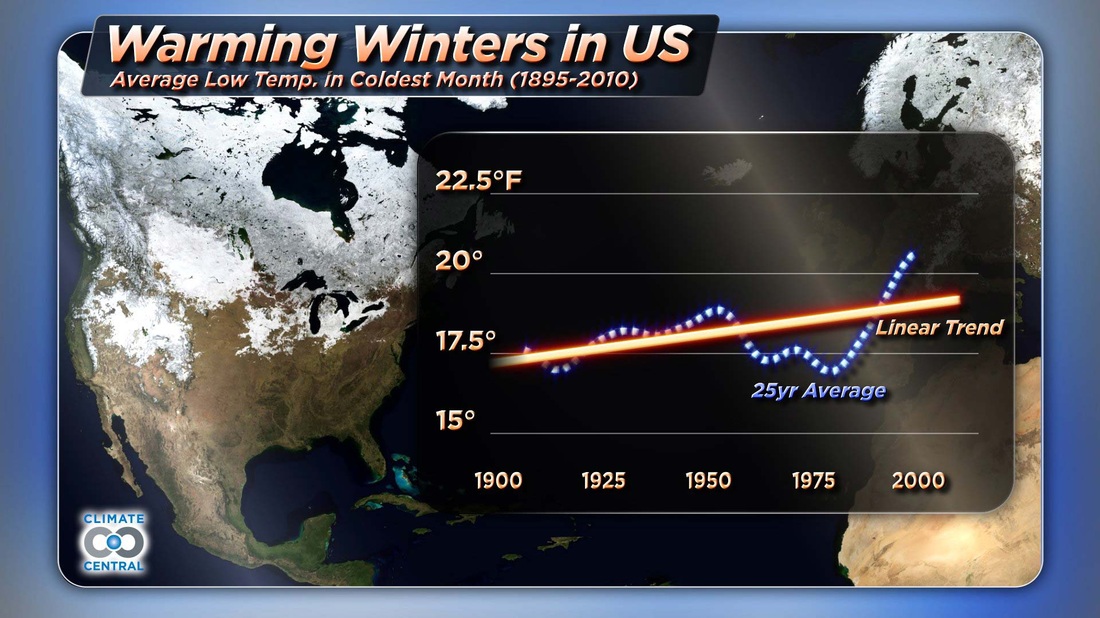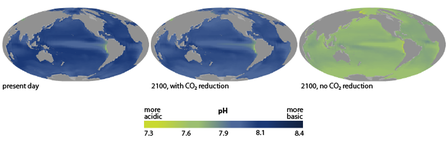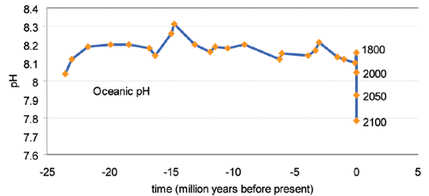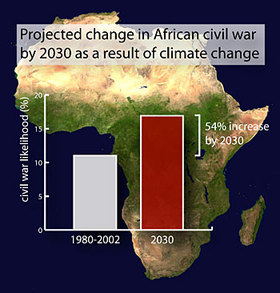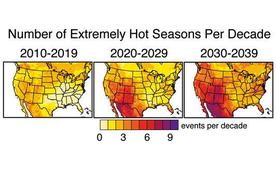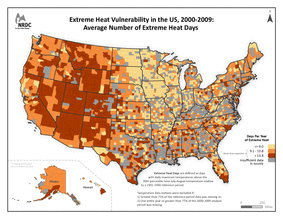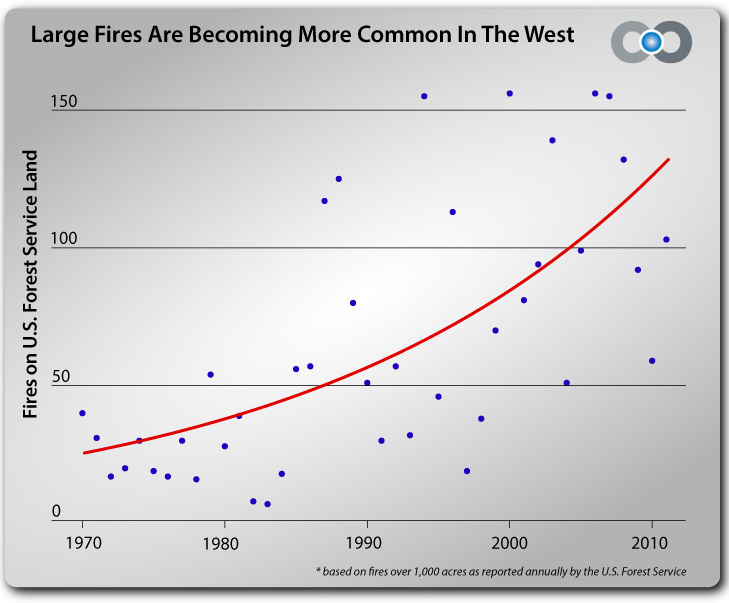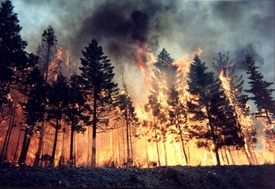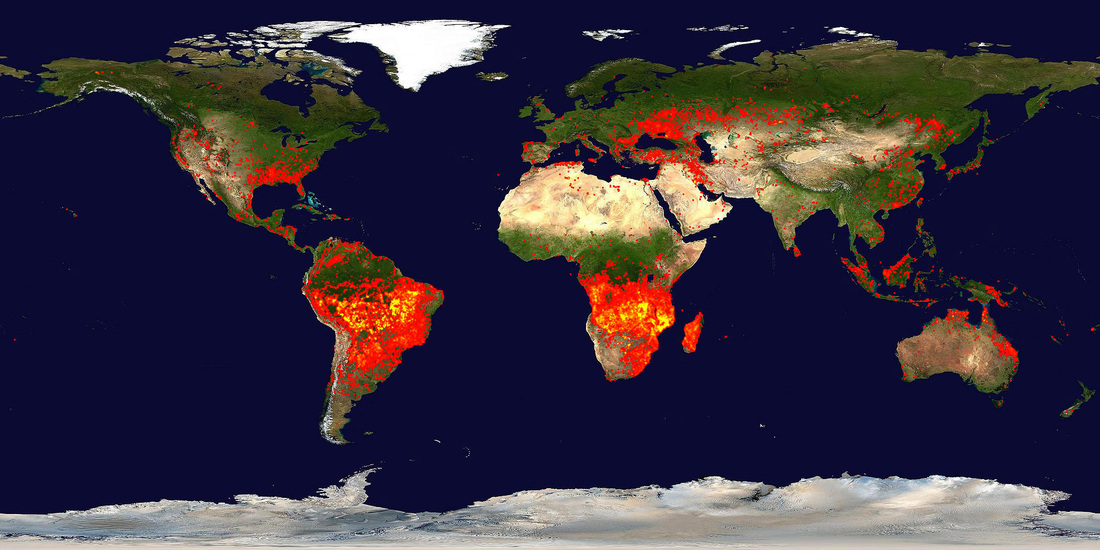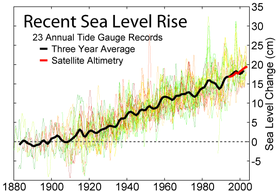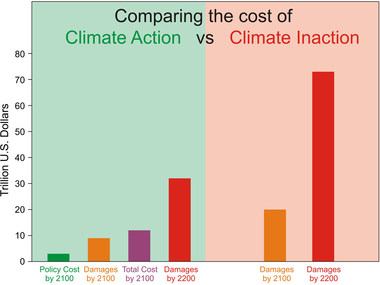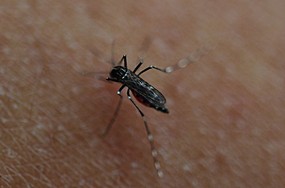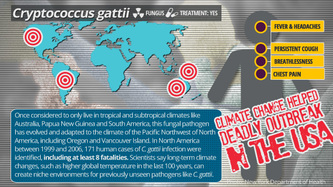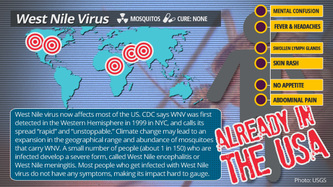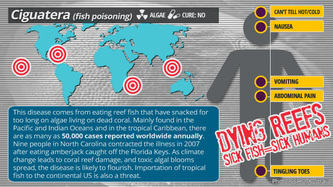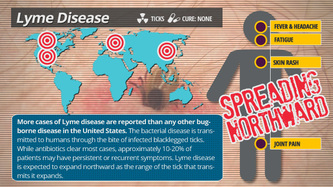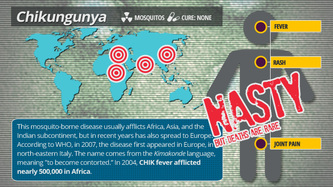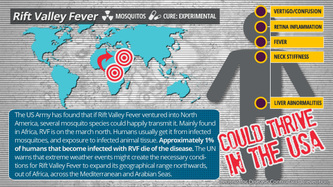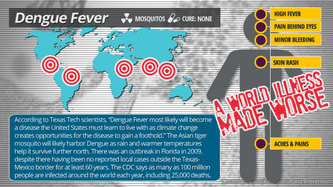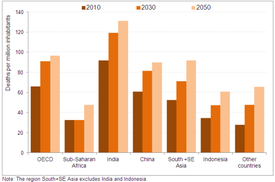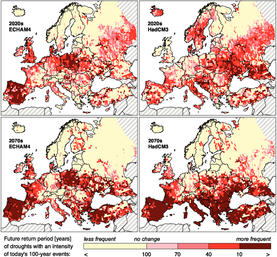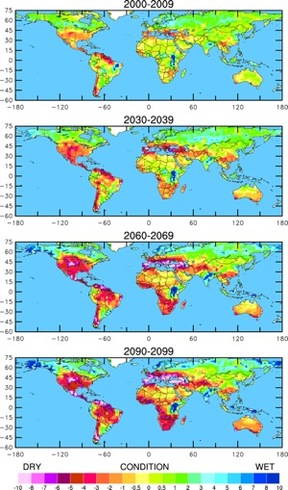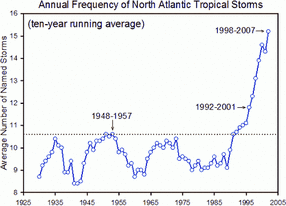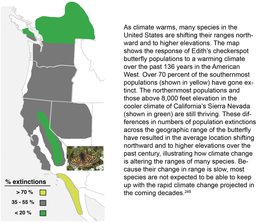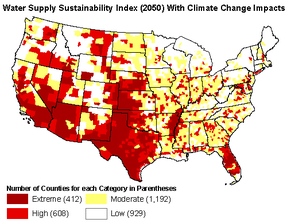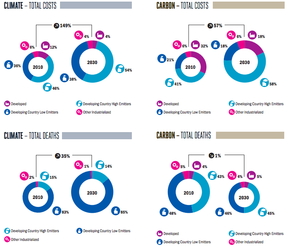Global Warming Effects
|
Navigation
Within five years, the International Energy Agency predicts irreversible climate change. "On planned policies, rising fossil energy use will lead to irreversible and potentially catastrophic climate change… we are on an even more dangerous track to an increase of 6°C [11°F]…. Delaying action is a false economy: for every $1 of investment in cleaner technology that is avoided in the power sector before 2020, an additional $4.30 would need to be spent after 2020 to compensate for the increased emissions.” ~International Energy Agency World Outlook 2012 Learn more. "A 4°C warmer world can, and must be, avoided – we need to hold warming below 2°C. Lack of action on climate change threatens to make the world our children inherit a completely different world than we are living in today. Climate change is one of the single biggest challenges facing development, and we need to assume the moral responsibility to take action on behalf of future generations, especially the poorest. If there is no action soon, the future will become bleak. Unless we take action on climate change, future generations will be roasted, toasted, fried and grilled.” ~Jim Yong Kim, President, World Bank |
The effects of climate change are profound and far-reaching. Learning the hard way that we can't separate the economy from the ecological systems that support it, climate change, perhaps the greatest challenge and threat humanity has ever faced, has been left largely unchecked by world leaders to continue unabated threatening the basis of civilization itself. Year after year, the predictions of the consequences of climate change become more and more daunting and research shows that climate scientists, despite how already disturbing their findings are, consistently underestimate key global warming impacts by being biased toward overly cautious estimates rather than more alarming predictions and that global warming is likely to be on the high side of current projections (see also) with dry regions becoming drier and wet regions becoming wetter. Heatwaves, droughts, diseases, floods, intense downpours, wildfires, rising sea levels, resource conflicts, air pollution, and melting glaciers are now causing widespread havoc and are having an impact on a wide range of fronts including health services, insurance, infrastructure, water supply, agriculture, transport, flood defenses, national and international security. Earth is set to become a hotter, drier, unhealthier, unstable, more uncomfortable, dangerous and more disaster-prone place in coming years and these changes will be largely irreversible for more than 1,000 years after carbon dioxide (CO2) emissions are completely stopped. There is no certainty that adaptation to this new world would be possible, but there is near-certainty that we will cross many climate tipping points this century (see also), pushing the climate into self-perpetuating feedback loops that are unstoppable, if we stay anywhere near our current greenhouse gas emissions path (see also) (see also). Some tipping points in the climate may even occur below 2°C of warming. Since 1880, the average global temperature has risen about 0.8°C (1.4°F), resulting in many of the weather extremes and climatic changes we see today, however, the most comprehensive CO2 study to date by the Global Carbon Project, published by leading scientists in the journal Nature Geoscience, says that the world is now firmly on course for the worst-case scenario in terms of climate change, with average global temperatures rising by up to 6°C (11.5°F) by the end of the century (PwC study) (see also). Such a temperature rise, which would be much higher near the poles (see also), would have devastating and irreversible consequences for the Earth, making large parts of the planet uninhabitable and threatening the basis of human civilization. As National Geographic states, "At six degrees, the oceans could be marine wastelands, the deserts could march across continents, and natural disasters could become common events. The world’s great cities could be flooded and abandoned. This could be 'the doomsday scenario'.” Even a global temperature rise of just 2°C is considered a "prescription for disaster". The world is close to reaching tipping points that will make it irreversibly hotter, making this decade critical in efforts to contain global warming. A failure to act on climate change will, as Professor Anthony Costello of the UCL Institute for Global Health states, "Result in an intergenerational injustice, with our children and grandchildren scorning our generation for ignoring the climate change threat – with moral outrage." How We Know Inaction is the Gravest Threat Humanity Faces
|
U.S. climate assessment warns of devastating 9°-15°F warming over most of U.S.Compiled by dozens of the country’s top climate experts, their message is clear: if we stay anywhere near our current emissions path, we are headed towards a devastating 9°F to 15°F warming over most of the United States this century, with more and worse extreme weather, heat waves, and droughts. The report notes, “Generally, wet (areas) get wetter and dry get drier.” Melting permafrost in the Arctic could push the Earth towards climate change that is irreversible on human timescalesAccording to a report by UNEP, as global warming accelerates, billions of tons of carbon once locked up in permafrost could be released into the atmosphere this century, engaging in a self-reinforcing warming cycle, also known as a positive feedback where extra warming thaws more permafrost, leading to further warming, and so on. Click the image for the UNEP report and the title link for additional information | Image: UNEP report “Policy Implications of Warming Permafrost” Climate change could make half the world uninhabitable by 2300According to researchers from the University of New South Wales in Australia and Purdue University in the US, "Under realistic scenarios out to 2300, we may be faced with temperature increases of 12 degrees (Celsius) or even more. If this happens, our current worries about sea level rise, occasional heatwaves and bushfires, biodiversity loss and agricultural difficulties will pale into insignificance beside a major threat - as much as half the currently inhabited globe may simply become too hot for people to live there." Click the image to view the study and the title link for additional information. "Climate change is the biggest global health threat of the 21st century ... the impacts will be felt all around the world — and not just in some distant future but in our lifetimes and those of our children.” ~The Lancet, 2009/The world's leading general medical journal |
|
Widespread Extinctions
According to the IPCC, direct climate change impacts will commit some 20-50% of species globally to extinction, possibly by 2100, and force plant and animal species to shift their geographic ranges and the timing of their life events, such as flowering, laying eggs or migrating, at ever-growing rates. According to scientific research, "These geographic range and timing changes are causing cascading effects that extend through ecosystems, bringing together species that haven’t previously interacted and creating mismatches between animals and their food sources," which can influence species’ survival. Already, human beings are currently causing the greatest mass extinction of species since the extinction of the dinosaurs 65 million years ago at rates 1000 to 10,000 times faster than normal. Compared to the natural background rate of one extinction per million species per year, we are now losing 30,000 species per year, or three species per hour, which is faster than new species can evolve. If present trends continue, scientists warn that within a few decades, at least half of all plant and animal species on Earth will be extinct, as a result of climate change, habitat loss, pollution, acidifying oceans, invasive species, over-exploitation of natural resources, overfishing, poaching and human overpopulation. "If global warming continues as expected, it is estimated that almost a third of all flora and fauna species worldwide could become extinct. Scientists … discovered that the proportion of actual biodiversity loss should quite clearly be revised upwards: by 2080, more than 80% of genetic diversity within species may disappear in certain groups of organisms, according to researchers in the title story of the journal Nature Climate Change. The study is the first world-wide to quantify the loss of biological diversity on the basis of genetic diversity." ~Nature Climate Change study, 'Cryptic biodiversity loss linked to global climate change' (see also). Learn more.
Increased Flooding Warmer air holds more moisture, which creates longer, more intense heavy rainfall events. The likelihood of extreme rainfall may have been doubled by rising greenhouse-gas levels. These events have been seen through out the world, especially in the U.S. over the last few decades. At the same time, rising seas, shifts in snowfall patterns, the onset of spring and glacier and river-ice melting may all exacerbate flooding risks. A worldwide review of global rainfall data at more than 8,000 weather gauging stations around the world led by the University of Adelaide has found that as temperatures rise, rainfall extremes are increasing on average globally with a 7% increase in extreme rainfall intensity for every degree increase in global atmospheric temperature, and a study published in Nature Geoscience found that for every 1°C rise In temperature, tropical regions will see 10% heavier rainfall extremes (see also). The most comprehensive CO2 study to date by the Global Carbon Project, published by leading scientists in the journal Nature Geoscience, says that the world is now firmly on course for the worst-case scenario in terms of climate change, with average global temperatures rising by up to 6°C (11.5°F) by the end of the century. That could lead to a substantial increase in rainfall intensity. The 2007 IPCC report concludes that intense rain events have increased in frequency during the last 50 years and that human-induced global warming has been a factor. According to the Union of Concerned Scientists, "Climate change is shifting precipitation toward the heaviest storms where rain occurs. Heavier rains, in turn, can drive more flooding. Since 1958, the amount of rain or snow falling in the heaviest one percent of storms has risen nearly 20 percent on average in the United States and 67 percent in the Northeast. High-resolution models that examined the potential impact of climate change on hurricanes project that by the end of this century, precipitation rates could increase, on average, 20 percent within 62 miles of the hurricane center." Learn more.
Shrinking Arctic Sea Ice Compared to the rest of the world, average temperatures in the Arctic region are rising twice as fast and three times as fast in Western Antarctica, which is one of the fastest-warming regions on Earth. Every year, arctic ice is getting thinner, melting and rupturing as seen in the total arctic sea ice volume, which has been reduced to one fifth of its level in 1980, and in Greenland, which is losing 200 billion tons of ice every year. Greenland ice melt increased nearly five-fold since the mid-1990s and Antartica’s ice loss increased 50% in past decade. Images from NASA satellites show that the area of permanent ice cover is now declining at a rate of 11.5% per decade, relative to the 1979 to 2000 average. If this trend continues, summers in the Arctic could become ice-free in as few as 30 years. According to a study published in the journal Environmental Research Letters, at least 75% and as much as 95% of this Arctic sea ice loss is a result of human activities, such as burning fossil fuels (see also). Learn more.
Facts on Arctic Climate Change Food Shortages Oxfam predicts climate change will help double food prices by 2030. Chart: Oxfam International | Click to enlarge
Affordable food is essential to human survival, well-being and prosperity. Rising food prices can lead to people becoming anxious, desperate, and angry and cause social unrest and violent conflict, particularly among the poor and unemployed. With every 1 degree Celsius rise in global average temperature, yields for crops like rice, wheat, and corn fall by 10% (PNAS Study). The most comprehensive CO2 study to date by the Global Carbon Project, published by leading scientists in the journal Nature Geoscience, says that the world is now firmly on course for the worst-case scenario in terms of climate change, with average global temperatures rising by up to 6°C (11.5°F) by the end of the century (PwC study) (see also). Connect the dots and that's a potential 60% drop in such crucial crop yields by 2100. Moreover, according to Oxfam, extreme weather has helped push tens of millions into “hunger and poverty” in what has been dubbed a “grim foretaste” of a warming world and Oxfam predicts climate change will help double food prices by 2030, stating “We are turning abundance into scarcity” and developed countries are no exception. The USDA released an analysis showing how climate change could devastate American agriculture and forests (see also). Although it has long been thought that climate change would enhance crop growth through the fertilizing effects of carbon dioxide, research conducted by Long, a professor of crop sciences at the University of Illinois at Urbana-Champaign, shows that any gains from CO2 fertilization will be offset by damage to plants from higher air temperatures, increases in atmospheric ozone, and the greater efficiency of crop pests in a CO2-enriched world. Add in factors, such as human population reaching between 8 and 11 billion by 2050 and up to 15 billion by 2100 and a predicted seafood collapse by 2048 (original study), and we have a recipe for a hunger disaster. Learn more.
According to the Oxfam International report 'Extreme Weather, Extreme Prices', corn prices could increase a staggering 500% by 2030, and all food prices will double by 2030, as a result of climate change. The news release for the report states, "New research shows that the full impact of climate change on future food prices is being underestimated. Rising temperatures and changing rainfall patterns hold back crop production and cause steady price rises. But extreme weather events – like the current US drought – can wipe out entire harvests and trigger dramatic food price spikes. We will all feel the impact as prices spike but the poorest people will be hit hardest. The huge potential impact of extreme weather events on future food prices is missing from today’s climate change debate. The world needs to wake up to the drastic consequences facing our food system of climate inaction." Learn more.
*Note: The “additional price increase” percentage is calculated off the original price increase. Source: Oxfam International report Extreme Weather, Extreme Prices | Click to enlarge
Threats to Western Forests The U.S. Geological Survey reports that slight changes in the climate may trigger abrupt ecosystem changes that may be irreversible and lead to an increase in the duration and intensity of the wildfire season in the western United States. The Rocky Mountains in Canada and the U.S. have seen nearly 70,000 square miles of forest die, an area the size of Washington state, since 2000 due to outbreaks of tree-killing insects, notably the bark beetle. According to NWF, "Warmer winter temperatures are contributing to unnaturally large, frequent and deadly outbreaks of bark beetles. As a result, nearly half of Colorado's 660,000 acres of lodge pole pine forests were infested by mountain pine beetles in 2006. Eastern Washington State lost 4million ponderosa and lodge pole pine trees in 2004 alone. Outbreaks have also occurred in Alaska, Arizona, California, Idaho, Montana, New Mexico, Oregon and Wyoming." In the Western United States scientists have documented a six-fold increase in the area burned over the past two decades, which they attribute to global warming. Learn more.
Warmer Winters and Stronger Snowstorms Across the U.S., the coldest regions are warming the fastest with winter warming since 1970 accelerating at rates more than four-and-a-half times faster per decade than over the past 100 years and with winter nights across the country having warmed about 30% faster than nights over the whole year. According to Climate Central, "Since 1970, every state has shown winter-warming." As winters become shorter, warmer and bring less snow fall in most regions, hotter temperatures can actually bring harsher winter storms since global warming has increased the amount of moisture in the atmosphere (4% increase since the 1970's), which means this excess moisture provides more fuel for intense downpours and more intense snowstorms at times and in places where it is cold enough to snow. Spring snow cover in the Northern Hemisphere has shrunk on average by 1 million square miles in the past 45 years and is predicted to shrink by more than a foot in the next 50 years. A warmer world leads to a reduction in the overall amount of snow falling each year, shrinks the snow season, threatens the future of the planet’s fruit and nut production (see also), and when it is cold enough for a snowstorm to hit, the warmer air and increased moisture in the air has a greater chance of producing potentially historic blizzards. As the NWF states, "Wintertime temperatures have been increasing across the northern United States. Since the 1970s, December-February temperature increases have ranged from 1 to 2 degrees in the Pacific Northwest to about 4 degrees in the Northeast to more than 6 degrees in Alaska. Winters are getting shorter, too. Spring arrives 10-14 days earlier than it did just 20 years ago. Global warming is bringing a clear trend toward heavier precipitation events. Many nasty pests are expanding further north or are no longer being kept in check by frosts or sufficiently cold temperatures. Large economic uncertainty and potential losses are in store for many communities, especially in regions where winter recreation provides significant tourism revenue." Climate Change is Remaking Winter.
Image: Climate Central | Click to enlarge
Desertification One of the greatest environmental challenges we face, posing a major barrier to meeting basic human needs in drylands, is desertification. One quarter of the earth's land is threatened by desertification, according to estimates by the United Nations Environment Programme (UNEP) and by 2100, one-third of the planet will be desert. Currently, 25% of the Earth's surface is desert. At current trends this area will rise to 50% by 2100 with severe drought, currently occupying 8% of inhabited land, rising to 40%, and extreme drought, currently occupying 3% of inhabited land, rising to 30%. As farming and grazing land continue to lose productivity, the livelihoods of over 1 billion people in more than 100 countries are being threatened by desertification. Some 10 to 20% of drylands are already degraded, and the ongoing desertification threatens the world’s poorest populations. Various scenarios that explore the future of desertification and human well-being in drylands, which is 41.3% of Earth's land surface, show that global desertified area is likely to increase. UN Ecosystems and Human Well-Being: Desertification Synthesis
Facts on Desertification
Acidifying Oceans Our current acidification rates are unparalleled in Earth's history and will lead most ecosystems into unknown territory. The acidity of the planets oceans have risen by 30% since the industrial revolution by absorbing 530 billion tons of CO2, and the current rate of ocean acidification is at least a hundred times faster than any time in the last few hundred thousand years and is most likely unprecedented in the Earth’s history. If we continue on our currents emissions trajectory, by the end of the century the acidity of the planet’s oceans could be more than double what it was prior to the industrial revolution. Learn more.
Image by NOAA Climate Services: Ocean Acidification Today and in the Future | Click to enlarge
A major 23-author science paper published in Science, states the world’s oceans may be turning acidic faster today from human carbon emissions than they did during four major extinctions in the last 300 million years, when natural pulses of carbon sent global temperatures soaring. Learn more.
Source: EUR-OCEANS, 2007 | Click to enlarge
|
Increased War and Violence
Climate change intensifies security threats, exacerbates migration and increases conflict by increasing competition for depleting resources, such as food and water, and causing more natural and humanitarian disasters, such as catastrophic flooding and the current droughts and famine in Africa, which can potentially cause mass migrations of environmental refugees. Climate change is also seen as a ‘conflict multiplier’, exacerbating threats caused by persistent poverty or weak resource management. The United Nations Environment Programme (UNEP) suggests that in the last 60 years, at least 40% of all intrastate conflicts have a link to natural resources and there may be anywhere between 200 million to a billion people migrating in the next four decades due to global food wars, according to the UNFCCC (see also). According to the National Intelligence Coucil: Global Trends 2030, climate change is likely to constrain natural resources, drive migration both domestically and internationally, and exacerbate tensions globally into 2030. Moreover, according to the National Intelligence Assessment: Global Water Security, over the next 20-30 years, vulnerable regions, particularly sub-Saharan Africa, the Middle East, South and Southeast Asia, will face the challenge of food shortages, water crises, catastrophic flooding driven by climate change and the depletion of groundwater in agricultural areas, which will pose risks to national and global food markets in the next decade, threatening social disruption. View The Implications of Global Climatic Changes for International Security
Devastating Heat Waves Global warming will bring more extreme, frequent and longer lasting heat waves. As the world warms up to 11.5°F over the next century, we will have more extremely hot summer days. Extreme heatwaves are now 50-100 times more likely due to climate change and it is urban areas, which hold 80% of the world population by 2100, that will feel the heat more acutely due to the "heat island" effect, which can cause urban temperatures to be as much as 10°F higher than nearby rural areas. In the U.S., recent studies show extreme heat events that now occur once every 20 years will occur about every other year if current trends continue, with heat waves potentially being commonplace in the U.S. by 2039. In addition to increasing heat-related illnesses, such as heat stroke, this extreme heat increases the likelihood of children developing cataracts by 51%. Between the period of 1951 to 1980, only 0.1 to 0.2 percent of the land surface was subjected to extreme summer heat. Since 2006 these extreme temperatures have covered about 10 percent of the land area and 12 percent of land in the Northern Hemisphere by 2011. According to NRDC, "When California was hit by deadly heat waves in 2006, the heat caused during a two-week period 655 deaths, 1,620 excess hospitalizations, and more than 16,000 additional emergency room visits, resulting in nearly $5.4 billion in costs." In 1995, Chicago suffered a heat wave that killed more than 700 people. Chicagoans could experience that kind of relentless heat up to three times a year by 2100 and overall heat-related U.S. deaths could increase by 150,000 by century's end due to climate change. All of this extreme heat can even make crime waves worse. Learn more. According to NRDC, "Nationwide, over 28.5 million people lived in counties where 2010's average temperature set records, and over 36 million people lived in counties where the hottest summer nights ever were recorded. These hot summer days and heat waves could be the norm by 2100." Heat Waves: The Details
According to a study led by world renowned climate scientist, James Hansen of NASA, published in the journal Proceedings of the National Academies of Sciences, during the period from 1951-1980, extremely hot summers covered just 1% of Earth’s land area. This had risen to 10% of the Earth’s land area by the period from 1981-2010, and even higher during the 2006-2010 period. As Climate Central states, "The study found that the odds of such extreme summers were about 1-in-300 during the 1951-1980 timeframe, but that had increased to nearly 1-in-10 by 1981-2010." Learn more.
Surge in Wildfires In a warming world, the likelihood of a wildfire is increased due to hotter and drier conditions, which create a tinderbox ideal for wildfires and have led to typical fire years lasting 75 days longer now than they were 40 years ago. Compared to the 1970s, there are now twice as many fires over 1,000 acres each year, 7 times as many fires covering more than 10,000 acres and nearly 5 times more fires larger than 25,000 acres each year, with an average of more than 100 fires per year from 2002 through 2011, compared to less than 50 during the 1970’s. Moreover, a study published in the science journal Nature Climate Change predicts that by the 2050s, forests will experience the worst droughts in 1,000 years. Since 1986, longer, warmer summers have resulted in a fourfold increase of major wildfires and a sixfold increase in the area of forest burned, compared to the period from 1970 to 1986. A similar increase in wildfire activity has been reported in Canada from 1920 to 1999. According to the USDA (see also), climate change will double the area burned in U.S. wildfires by 2050. As NWF states, "Wildfire frequency, severity and damages are increasing because of rising temperatures, drying conditions and more lightning brought by global warming." These fires are not just a result of a changing climate, they're also contributing to the overall warming trend much more than imagined by releasing the CO2 stored in the trees contributing to the greenhouse effect and therefore causing global warming. An NRDC report, Killer Heat, found that "More than 150,000 Americans could die by the end of this century due to the excessive heat caused by climate change." Wildlifes: A Symptom of Climate Change.
According to the Turn Down the Heat: Why a 4°C Warmer World Must be Avoided, by the World Bank, in Amazonia, forest fires could as much as double by 2050 with warming of approximately 1.5-2°C above preindustrial levels. In a 4°C world, or even 6°C, changes would be even more severe. Learn more.
Sea Level Rise The two major causes of global sea level rise are thermal expansion of the oceans, which occurs when water expands as it warms, and the loss of land and sea-based ice, such as polar ice caps and glaciers, due to increased melting at the hands of global warming. Global sea levels rose about 17 centimeters (6.7 inches) in the last century. The rate in the last decade, however, is nearly double that of the last century and NASA scientists are predicting it could be as much as several meters sea level rise this century, if global warming is not addressed. With 70% of the world's population living on low-lying coastal plains and with 60% of the 39 largest metropolitan areas with a population over 5 million, including 12 of the 16 with populations exceeding 10 million, located within 100km of the coast, sea level rise is a global problem that affects far more than just small island nations. Sea levels, which are now rising 60% faster than previously estimated up until 2011, could rise 6 feet by 2100, 18-29 feet above current levels over the next few centuries and 69-200 feet in the next, at least, 1000-2000 years, if we continue our current carbon emissions path. Learn more.
The West Antarctic Ice Sheet has increased 4.3 degrees Fahrenheit (2.4 degrees Celsius) in average annual temperature since 1958, which is three times faster than the average temperature rise around the globe. The West Antarctic Ice Sheet sits largely in the warming ocean, making it vulnerable to melting both due to rising air and water temperatures and contains enough trapped ice to raise sea levels up to 6 meters - almost 20 feet. Image: Debra Tillinger, NOAA/CC BY 2.0 | Click for source Extreme Allergies Climate change affects the length and severity of the allergy season by worsening respiratory allergies, which left unchecked, will affect approximately 25 million Americans, increasing springtime allergies to tree pollens, creating warmer than average winters which are usually followed by heavy flu seasons, including early and severe influenza, and increasing the irritation and amount of ragweed due to increased carbon dioxide levels. Pollen counts are expected to more than double by 2040. According to the study, "In the year 2000, pollen counts averaged 8,455. Fast forward to 2040, and these counts are anticipated to reach 21,735." Allergies and asthma already cost the U.S. more than $32 billion annually in direct health care costs and lost productivity. These economic impacts could significantly increase as carbon dioxide levels increase and global warming continues. Learn more.
Economic Downfall You can't separate the economy from the ecological systems that support it. The climate crisis is already causing unprecedented damage to the world economy, costing 1.6% - or $1.2 trillion per year - of worldwide GDP. By 2030, these costs will rise to 3.2% of global GDP, costing the U.S. over 2% of its GDP, India over 5% and lower-income countries 11% of GDP. By 2100, climate change will cost 20% or more of the world’s GDP, although Nicholas Stern, the author of this government-commissioned review, now states he underestimated the risks and the costs will be even higher. These economic losses dwarf the modest costs of tackling climate change, which is emission reductions of just 0.5% of GDP for the next decade. However, every year of delay on climate action between 2010-2030 adds $500 billion to the investment that will inevitably be required, according to the International Energy Agency World Energy Outlook 2011 and as the IEA states, "Delaying action is a false economy: for every $1 of investment in cleaner technology that is avoided in the power sector before 2020, an additional $4.30 would need to be spent after 2020 to compensate for the increased emissions (see also).” In the US, 2011 and 2012 were the two most weather-related extreme years on record with 14 weather disasters occurring in 2011 and 11 weather disasters in 2012, each sustaining more than $1 billion each with a total combined price tag of $188 billion dollars. Superstorm Sandy alone cost the US over $60 billion. Climate change fuels these extreme weather events, increasing their duration, and making them more frequent and intense (see also) and even cuts humans’ work capacity 10%, with a 40% cut projected for 2100 (see also). By 2050, a combination of rising heat and humidity is likely to cut the world’s labor capacity to 80% during summer months, which is twice the effect observed today. In the US, taxpayers paid out a record $20 billion in federal crop-insurance claims for the 2012 record drought that scorched much of the country. Moreover, the world’s largest reinsurance company Munich RE and Swiss RE tallied the huge economic costs of climate inaction in their reports, “Natural and man-made catastrophes in 2012,” and “Severe weather in North America,” which both show a clear rise in extreme weather events in the past 30 years and the associated costs of recovery. According to Munich RE, there has been a nearly quintupled number of weather-related loss events in North America for the past three decades, compared with a quadrupling in Asia, 2.5 times as many events in Africa, twice as many in Europe and 1.5 times in South America. Furthermore, a large coalition of investors, responsible for managing $22.5 trillion in assets, sent an open letter to government leaders around the world warning of serious disruption to our economies, our pensions and our way of life if we don't act on climate change. In their report the investors warned that rapidly growing greenhouse gas emissions and more extreme weather are increasing investment risks globally and threatening the investments and retirement savings of millions of people because governments were delaying tougher emissions cuts or more generous support for greener energy. The Scary Truth About How Much Climate Change is Costing You
"The benefits of reducing greenhouse gas emissions outweigh the costs by trillions of dollars. Combining the results of the report by the German Institute of Economic Research and Watkiss et al. 2005 studies, we find that the total cost of climate action (cost plus damages) in 2100 is approximately $12 trillion, while the cost of inaction (just damages) is approximately $20 trillion." ~Skeptical Science | Click to enlarge
"The overall costs and risks of climate change will be equivalent to losing at least 5% of global GDP each year, now and forever. If a wider range of risks and impacts is taken into account, the estimates of damage could rise to 20% of GDP or more. In contrast, the costs of action - reducing greenhouse gas emissions to avoid the worst impacts of climate change - can be limited to around 1% of global GDP each year." ~Report on the Economics of Climate Change, World Resources Institute Threatened National Security |
Spread of Disease
Diseases such as lyme disease, malaria, dengue fever, yellow fever, plague, and avian influenza, or bird flu, could become more difficult to control and more widespread due to rising temperatures. The malaria parasite itself is generally limited to certain areas by cooler winter temperatures since it is not able to grow below 16°C. As temperatures rise, diseases can grow and disease vectors, which are the carriers that transmit disease, such as mosquitoes, will mature more rapidly and have longer active seasons. Warmer weather means that mosquitoes' breeding cycles are altered, allowing them to multiply at a much faster rate, posing an even greater threat of disease. Learn more.
Worsening Air Quality Hotter average temperatures intensify the harmful effects of ground level ozone, or smog pollution, and increase the number of "bad air days" when it's hard to breathe. The NRDC states, "This puts many of us at risk for irritated eyes, noses, and lungs, but it is particularly dangerous for people with respiratory diseases like asthma." As the climate continues to change, unhealthy air pollution will get worse and by 2050, air pollution is expected to become the biggest cause of premature death. Learn more.
Premature deaths from ground-level ozone: Number of deaths per million inhabitants
Source: OECD (2012), OECD Environmental Outlook to 2050; Baseline, output from IMAGE suite of models. | Click to enlarge
Increased Drought There have been increased periods of drought all over the globe, but particularly in the Southwestern U.S. and famine-stricken areas of Africa and Asia. According to the National Center for Atmospheric Research, the percentage of Earth's surface suffering drought has more than doubled since the 1970s. In Africa alone, the IPCC projects that between 75 and 250 million people will be exposed to increased water stress due to climate change. These longer and drier droughts will have major consequences for water supply, agriculture and wildlife. A major 2011 NOAA report concluded, human-caused climate change is already a major factor in more frequent Mediterranean droughts. A comprehensive 2011 study of drought, by Aiguo Dai of the National Center for Atmospheric Research, concludes that recent warming has caused widespread drying over land and that this drying is likely to become more severe in the coming decades with widespread impacts. Learn more.
Change in the recurrence of 100-year droughts. Source: IPCC Climate Change 2007: Working Group II: Impacts, Adaptation and Vulnerability | Click to enlarge
These four maps illustrate the potential for future drought worldwide over the decades indicated, based on current projections of future greenhouse gas emissions. Learn more.
Melting Glaciers Warming temperatures lead to the melting of glaciers and ice sheets. The total volume of glaciers on Earth is declining sharply. Glaciers have been retreating worldwide for at least the last century; the rate of retreat has increased in the past decade and according to the National Snow & Data Center, "Since the early twentieth century, with few exceptions, glaciers around the world have been retreating at unprecedented rates. In fact, some ice caps, glaciers and even an ice shelf have disappeared altogether in this century. Many more are retreating so rapidly that they may vanish within a matter of decades." According to a UN climate report, the Himalayan glaciers, which are melting faster than anywhere else in the world and are the sources of Asia's biggest rivers, could disappear by 2035 as temperatures rise. Approximately three billion people live in the drainage basin of the Himalayan rivers, depending on it's immense, but dwindling freshwater supply. Learn more.
More Intense Hurricanes Due to global warming and according to the journal nature climate change, extremely intense storms, such as Hurricane Sandy in 2012, could make landfall more frequently, causing destructive storm surges every at least 3 years instead of once a century (see also) and may double global losses from hurricanes. According to NOAA, anthropogenic warming by the end of the 21st century will likely cause hurricanes globally to be more intense on average by 2 to 11%. This change would imply an even larger percentage increase in the destructive potential per storm. There are better than even odds that anthropogenic warming over the next century will lead to an increase in the numbers of very intense hurricanes. Anthropogenic warming by the end of the 21st century will cause up to 20 more hurricanes per year, which will likely have substantially higher rainfall rates than present-day hurricanes, with a model-projected increase of about 20%. Learn more.
Shifting Habitats As temperatures rise, plants and animals are shifting their ranges towards the poles and to higher altitudes, and migration patterns for animals as diverse as whales and butterflies are being disrupted. A four-decade long study published in the journal Science, reveals the strong link between climate change and shifts in species' global ranges, showing that plant and animal species are shifting their natural habitats northward at rates 2-3 faster that previously thought. This key impact of global warming on wildlife allows invasive species to spread and causes habitat displacement, whereby ecosystems that animals have spent millions of years adapting to shift quickly. Moreover, a recent study looked at 305 species of birds in North America and found that of those, more than half (177) have expanded their range northward by an average of 35 miles in the past four decades. A WWF study found that a northern exodus from the U.S. to Canada by some types of warblers led to a spread of mountain pine beetles that destroyed 11 million hectares of economically productive balsam fir trees. Learn more.
Image: United States Global Change Research Program | Click to enlarge
Water Shortages Water scarcity already affects every continent. According to the United Nations and International Decade for Action Water for Life 2005-2015, by 2025, 1.8 billion people will be living in countries or regions with absolute water scarcity, and two-thirds of the world's population could be living under water stressed conditions. With the existing climate change scenario, almost half the world's population will be living in areas of high water stress by 2030. According to the Turn Down the Heat: Why a 4°C Warmer World Must be Avoided, by the World Bank, mean-annual runoff will decrease by 20-40% Danube, Mississippi, Amazon and Murray Darling Basin in a 2°C world, and double in a 4°C world. According to the Global Outlook for Water Resources to the Year 2025, it is estimated that by 2025, more than half of the world population will be facing water-based vulnerability and human demand for water will account for 70% of all available freshwater. Furthermore, a report in November 2009 by the 2030 Water Resources Group suggests that by 2030, in some developing regions in the world, water demand will exceed supply by 50% and a report jointly produced by more than two dozen U.N. bodies states that, "By 2030, nearly half of the world's people will be living in areas of acute water shortage." The planet is in the midst of what the United Nations is calling a "Global Water Crisis." Freshwater is the most fundamental finite resource with no substitutes for most uses, yet we are consuming fresh water at least 10 times faster than it is being replenished in regions of northern Africa, the Middle East, India, Pakistan, China, and the U.S.. In the U.S., global warming will increase the risk of water shortages in one-third of counties in the continental United States by 2050. More than 400 of these counties will face extremely high risks of water shortages. Learn more.
According to NRDC, global warming will increase the risk of water shortages in one-third of counties in the continental United States by 2050. More than 400 of these counties will face extremely high risks of water shortages. Image by Natural Resources Defense Council | Click to enlarge
Environmental Refugees These are people forced to abandon their homes, land and even entire islands, by deteriorating environmental conditions linked to climate change, such as desertification, dwindling freshwater supplies, flooding, rising sea levels and more intense extreme weather events. Some are forced to leave temporarily - others permanently. The majority will be among the planet's poorest and most vulnerable people whom have contributed the least to climate change, yet will feel its greatest impacts. By 2020, the UN has projected that we will have 50 million environmental refugees and in 2050, global warming will force up to 150-200 million "climate refugees" to move to other countries, according to a report from the Environmental Justice Foundation, or even up to a billion people in the next couple of decades, according to the UNFCCC (see also). 500 - 600 million people, nearly 10% of the world's population, are at risk from displacement by climate change. Learn more.
Degraded Mountain Regions "In a changing climate, mountain regions are among the most vulnerable. They provide the world with resources such as water, timber, biodiversity and hydraulic energy and they are at risk." ~Food and Agriculture Organization, UN
Increased Pest Incidence Enhanced crop growth is one of the few potential advantages of rising CO2 levels, however, according to Yale Environment 360, "Any gains from CO2 fertilization will be offset by damage to plants from higher air temperatures, increases in atmospheric ozone, and the greater efficiency of crop pests in a CO2-enriched world." Although studies and evidence are only just starting to be documented, climate change is likely to turn pathogens or pests, which are not considered a major threat today, into potential new threats in the future. Learn more.
Higher Death Rates According to the Climate Vulnerability Monitor by DARA, 100 million people could die as a result of climate change by 2030. Mainly due to hunger and the spread of disease, climate change already claims the lives of 400,000 people on average each year with an estimated 4.5 million deaths each year linked to air pollution, hazardous occupations and cancer. By the end of next decade, these numbers will increase substantially with developing countries and the world's poorest - those least responsible for carbon emissions - being affected the most. As show below, these low-emission countries are already experiencing 40% of all its economic losses, and over 80% of all climate change-related mortality. Learn more.
Coral Bleaching Coral Reefs are disappearing four times faster than the rainforest. Due mainly to warming temperatures, acidifying oceans and pollution, close to 30% of the ocean’s reefs have already vanished since 1980, including half of the reefs in the Caribbean, and scientists forecast that Australia’s Great Barrier Reef may be dead by the year 2050, tropical corals could be gone by the middle to the end of this century, cold-water corals will be severely stressed by 2040 with two-thirds of them in a corrosive environment by the century’s end, 70% of the world's coral reefs will be destroyed by the year 2050 and all coral reefs could be gone by the end of the century (see also). Learn more.
|
|
Since 1880, the average global temperature has risen about 0.8°C (1.4°F), resulting in many of the weather extremes and climatic changes we see today, however, the most comprehensive CO2 study to date by the Global Carbon Project, published by leading scientists in the journal Nature Geoscience, says that the world is now firmly on course for the worst-case scenario in terms of climate change, with average global temperatures rising by up to 6°C (11.5°F) by the end of the century (PwC study) (see also). Such a temperature rise, which would be much higher near the poles (see also), would have devastating and irreversible consequences for the Earth, making large parts of the planet uninhabitable and threatening the basis of human civilization. As National Geographic states, "At six degrees, the oceans could be marine wastelands, the deserts could march across continents, and natural disasters could become common events. The world’s great cities could be flooded and abandoned. This could be 'the doomsday scenario'.” The world is close to reaching tipping points that will make it irreversibly hotter, making this decade critical in efforts to contain global warming. Learn more.
|
|
|
Last Revised: 11/20/13
Commenting Rules |





